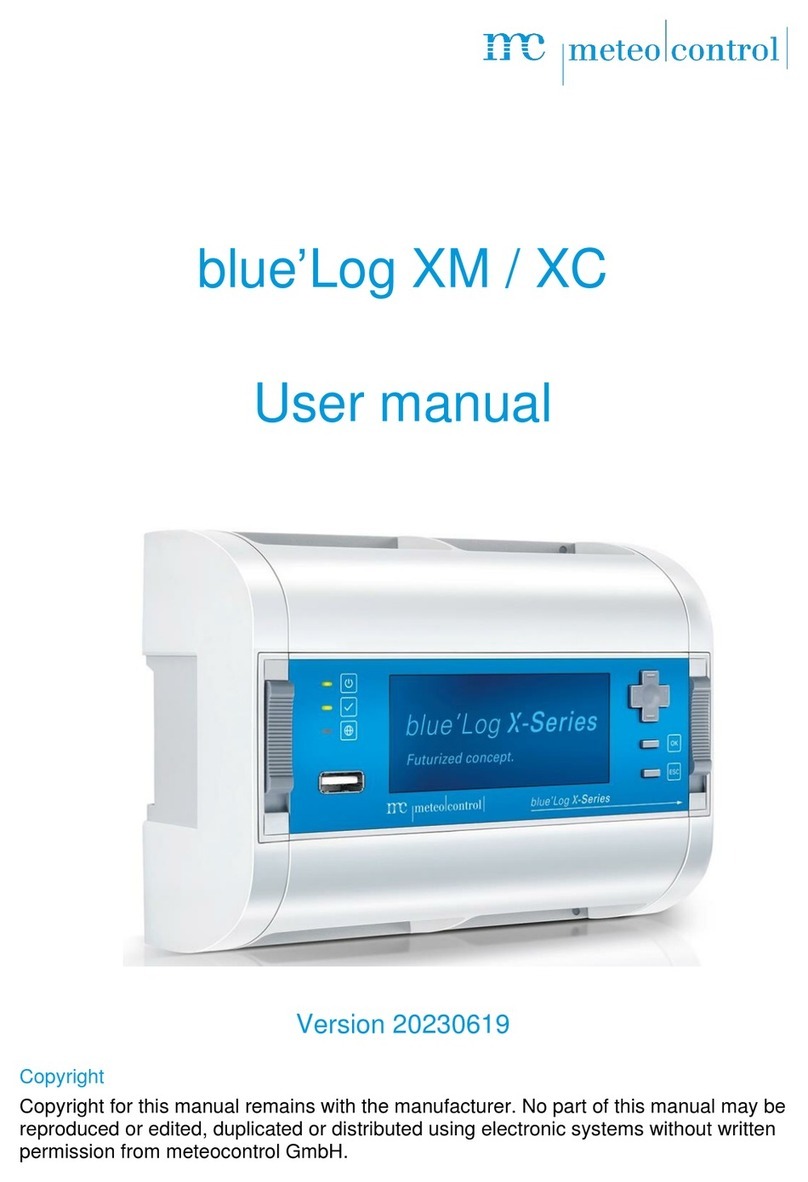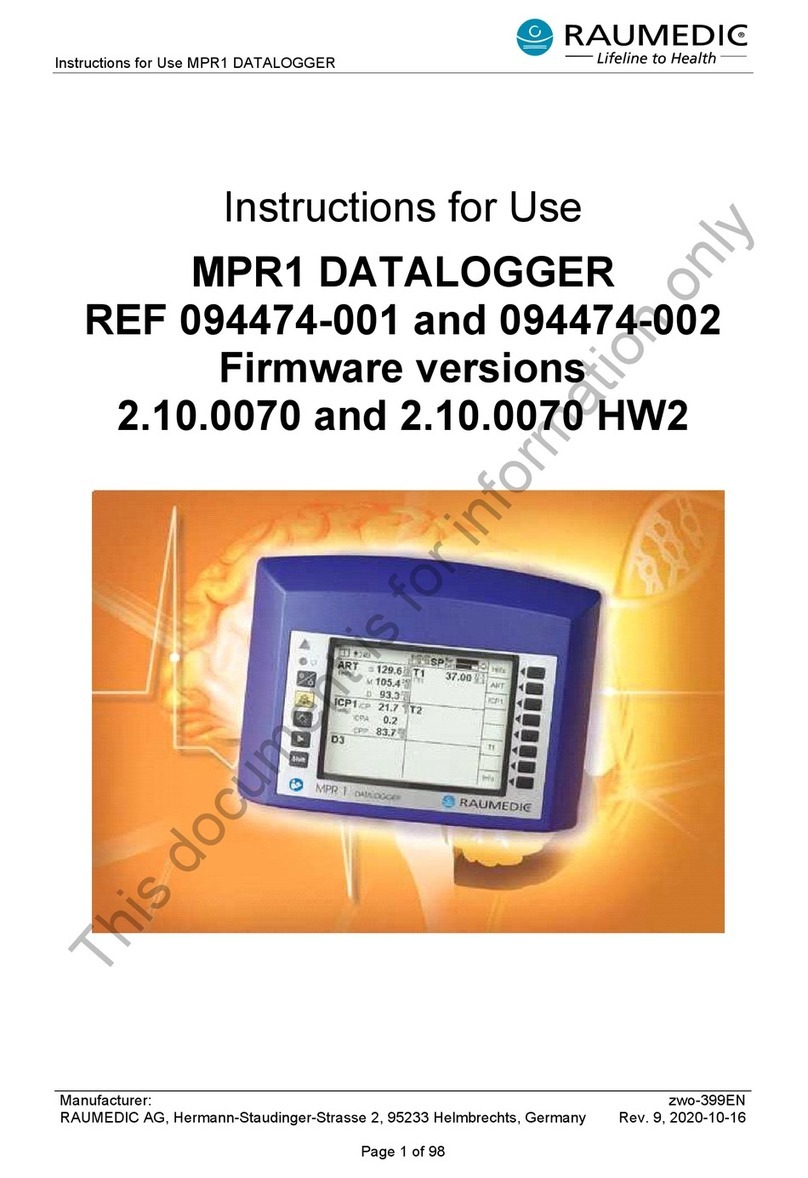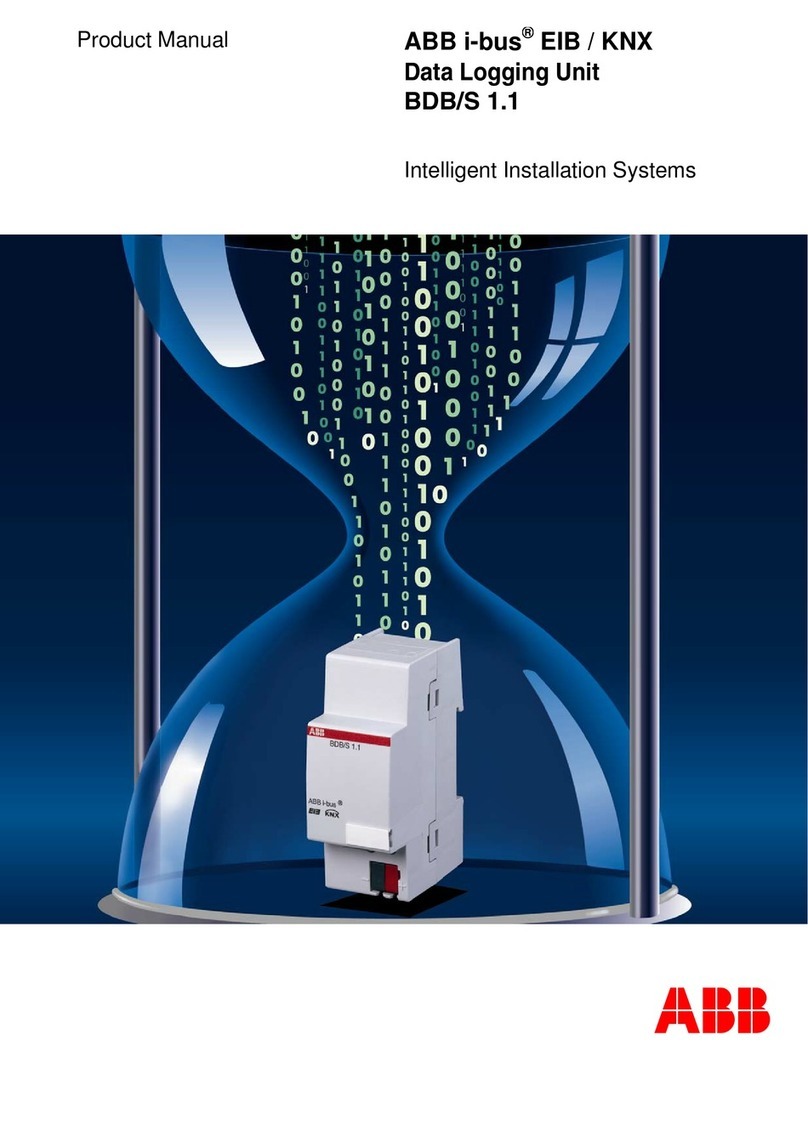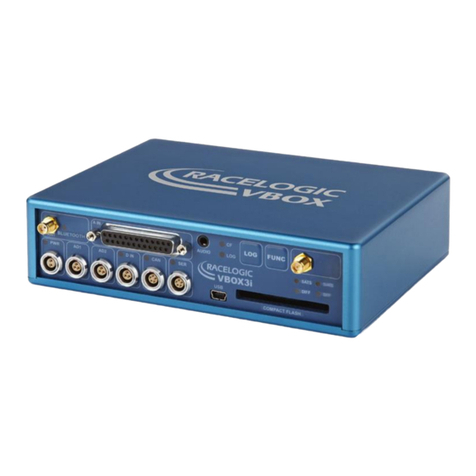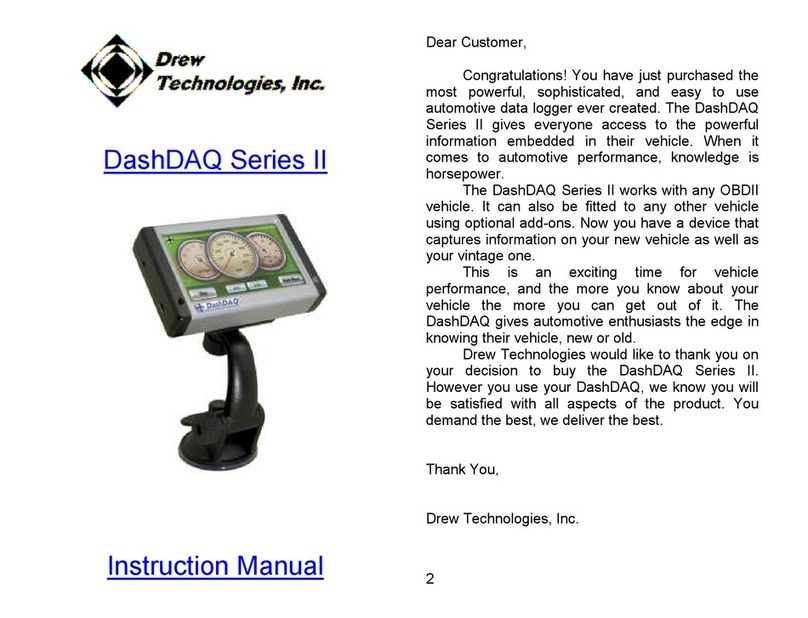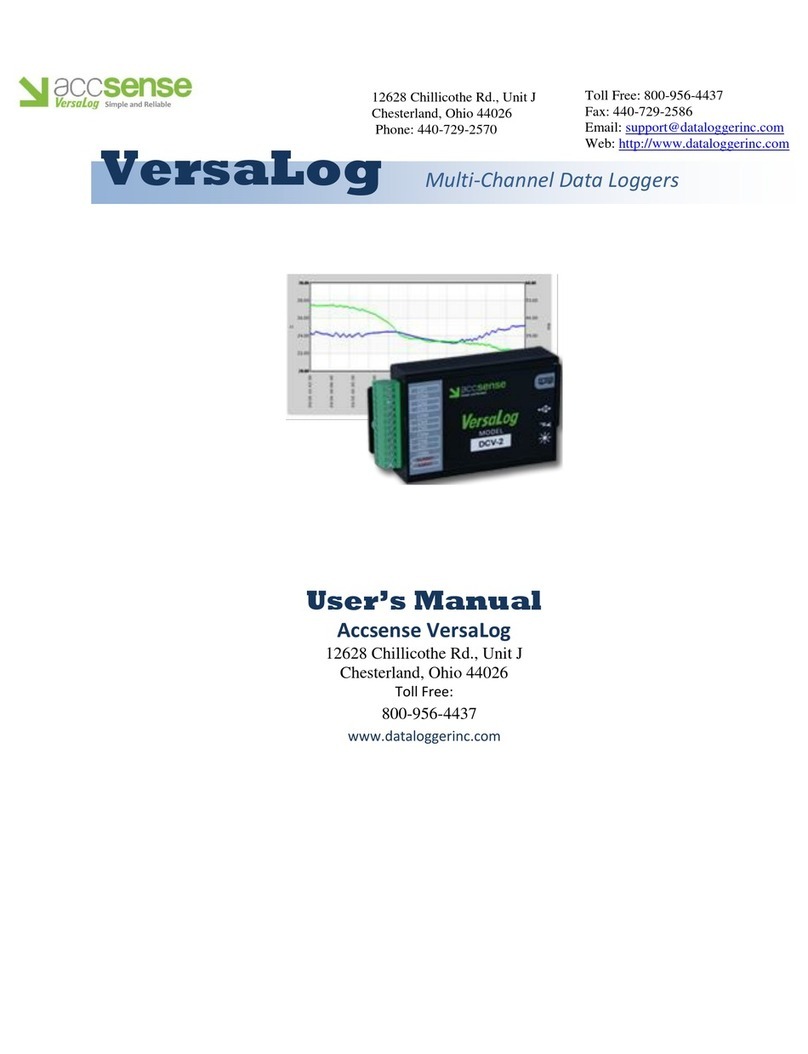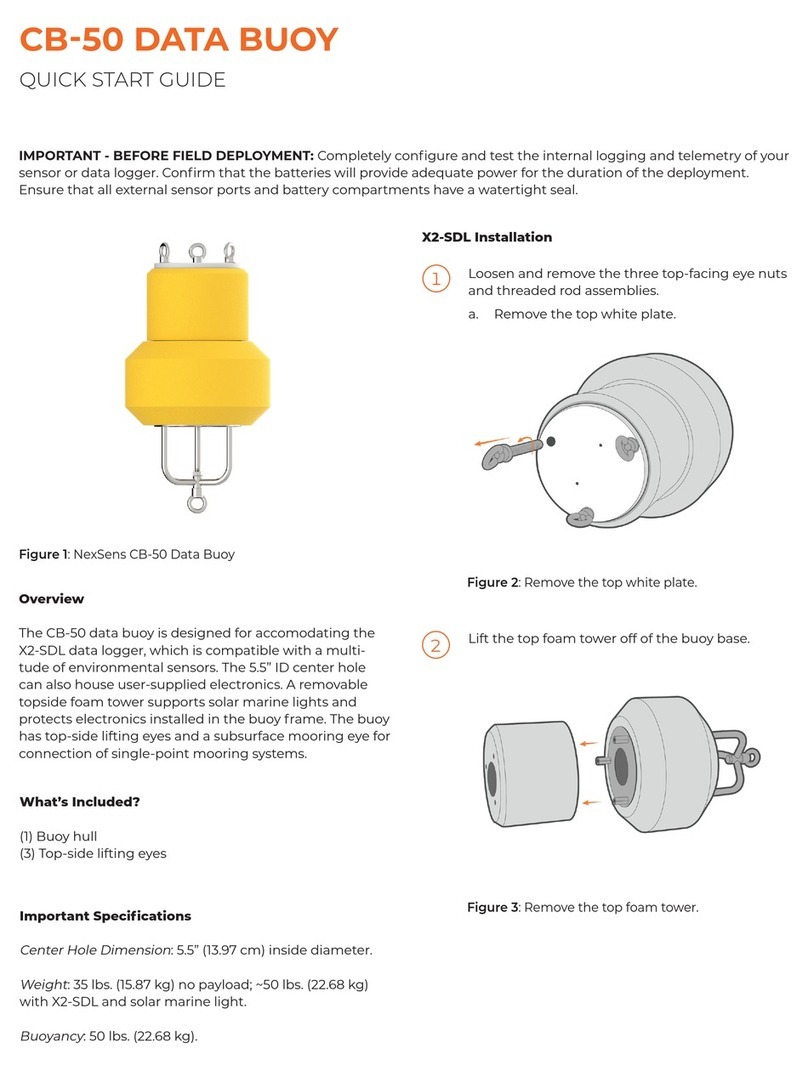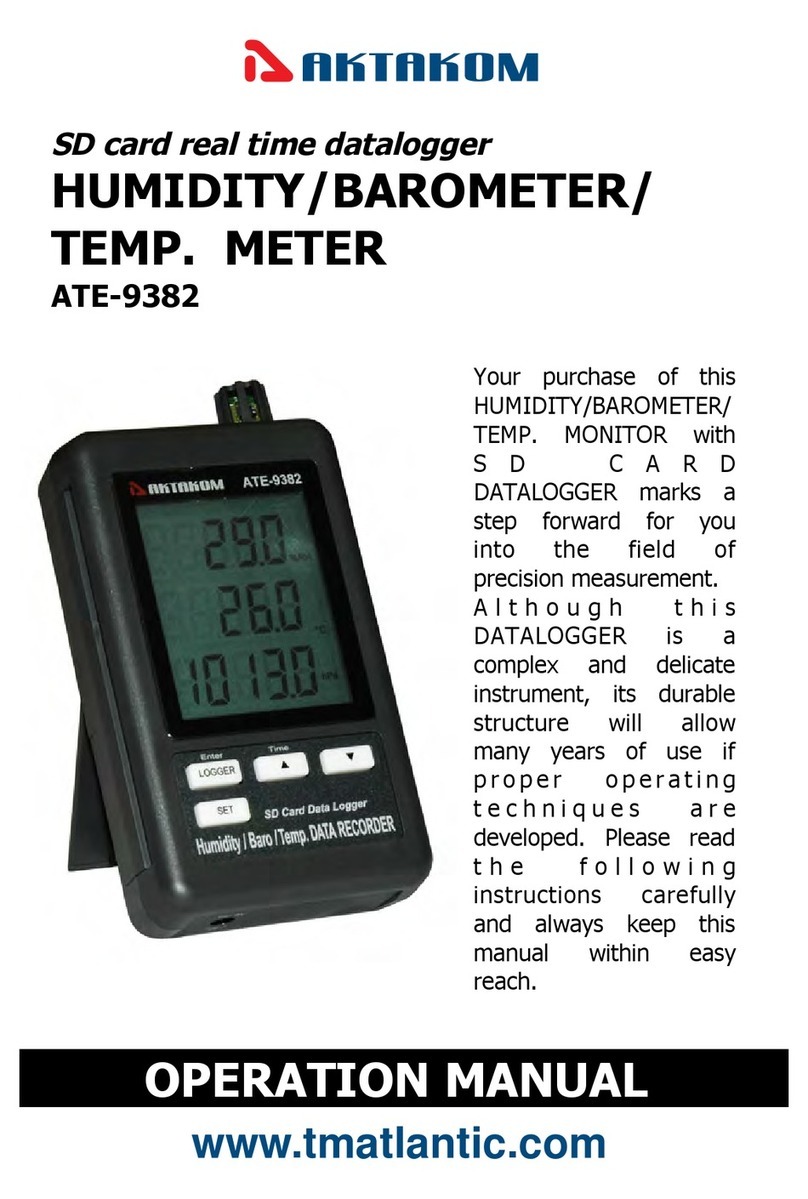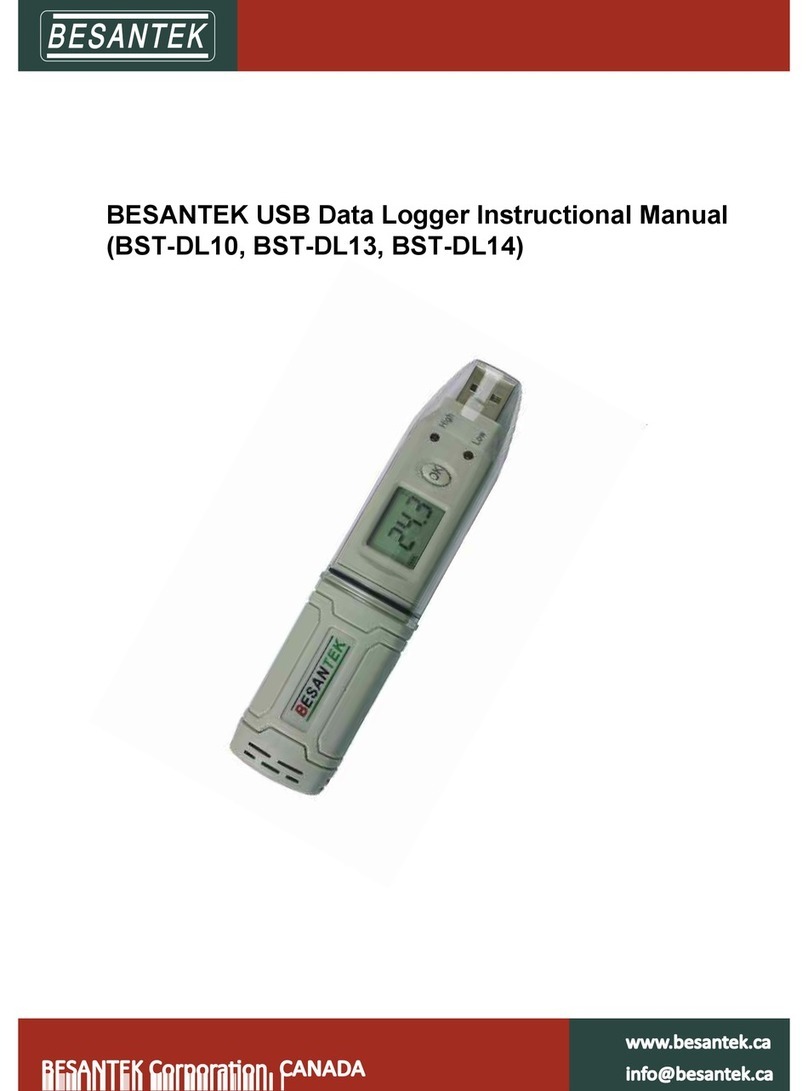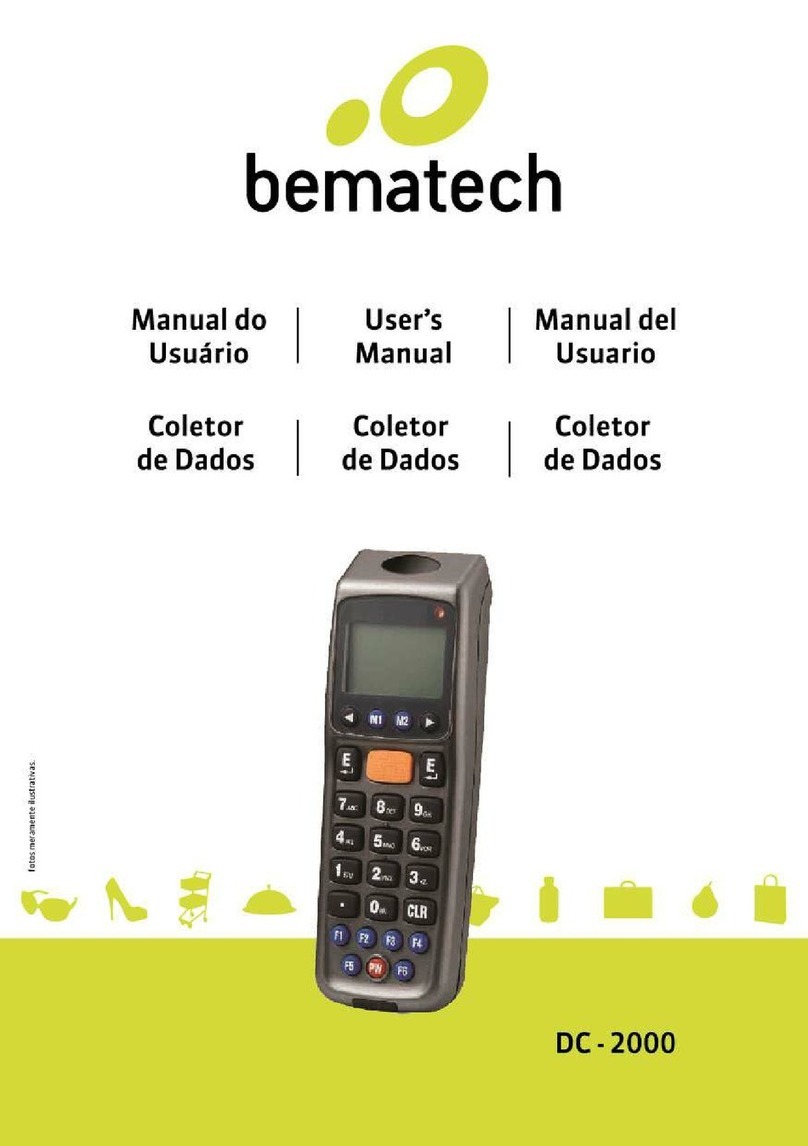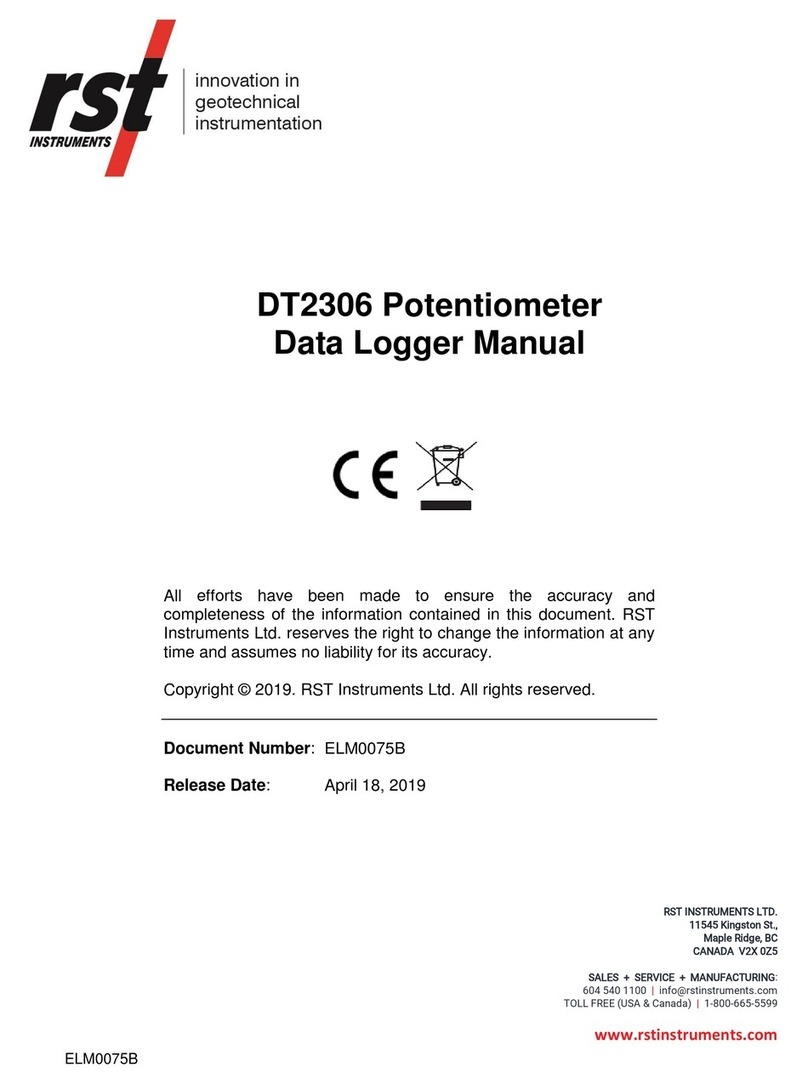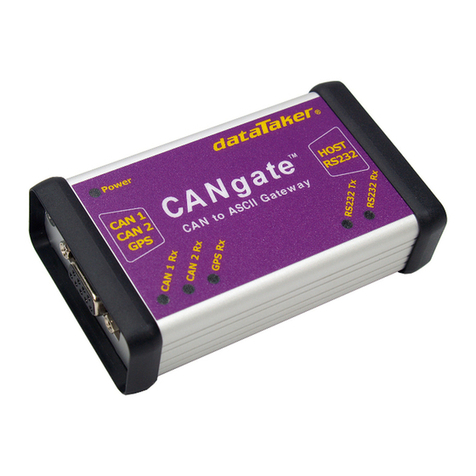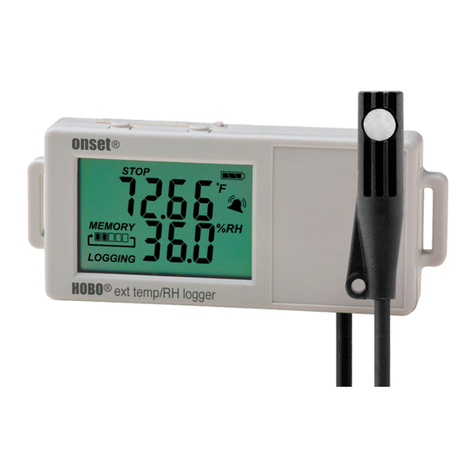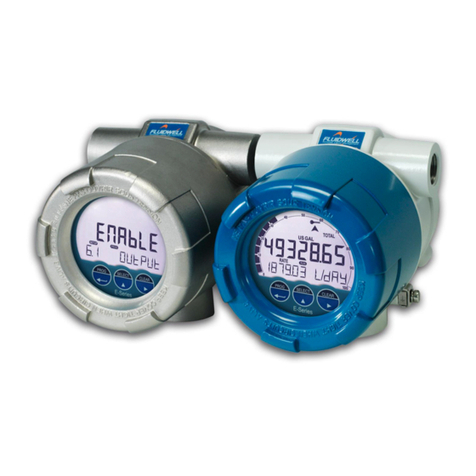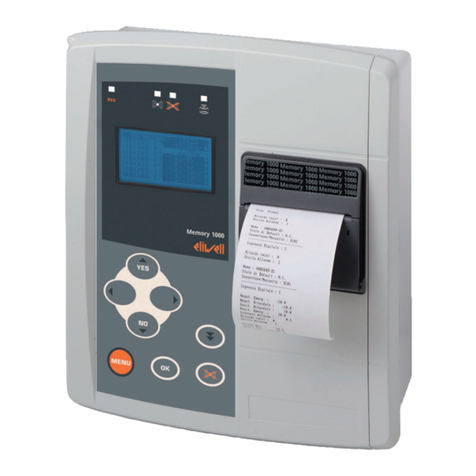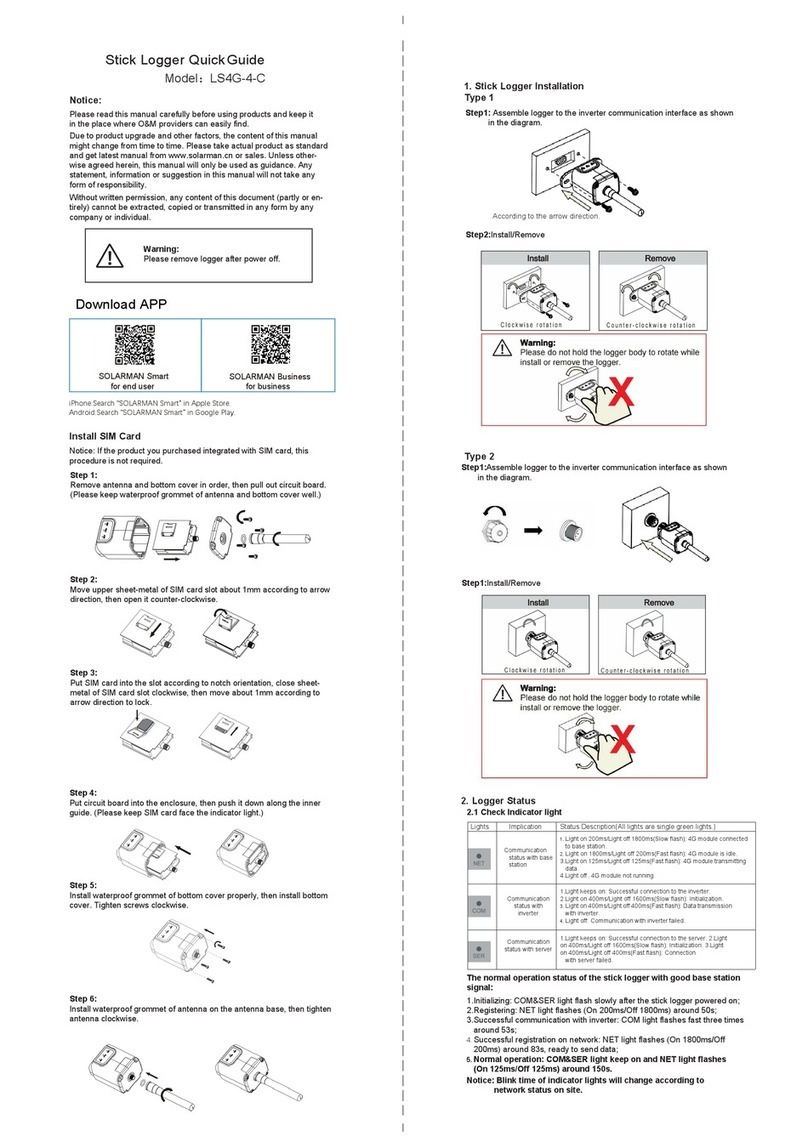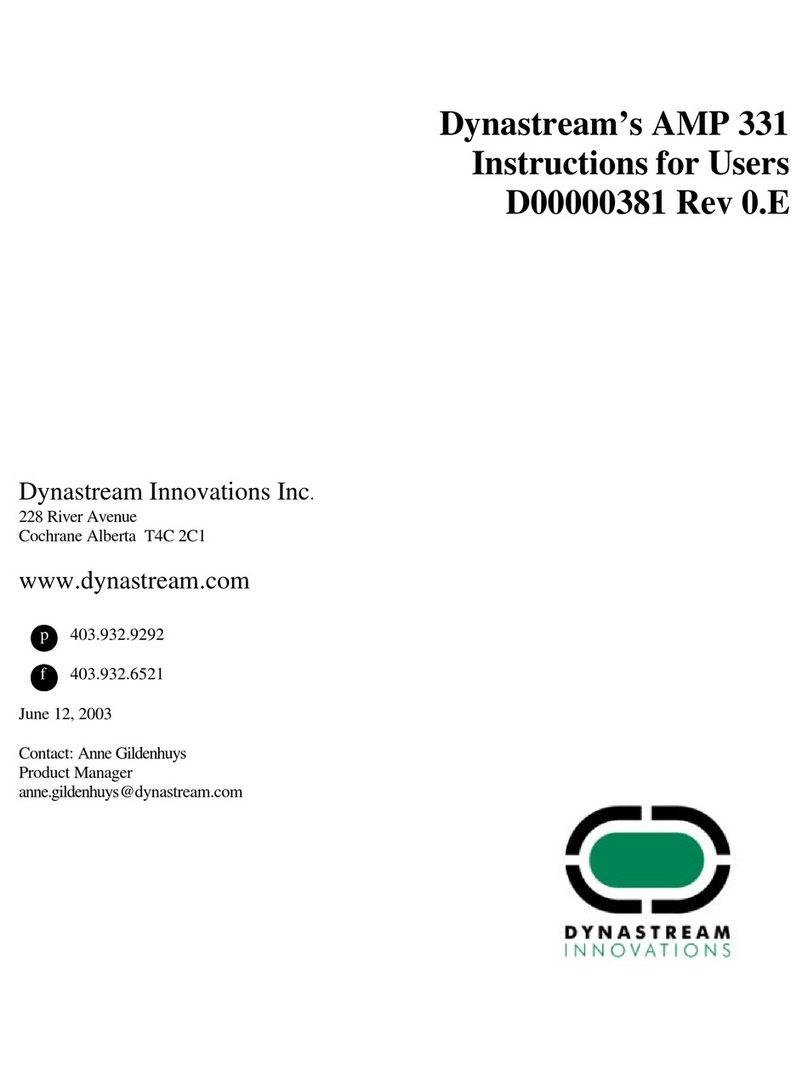Meteo Control blue'Log X Series User manual

blue’Log X series
Copyright
Copyright for this manual remains with the manufacturer. No part of this manual may
be reproduced or edited, duplicated or distributed using electronic systems without
written permission from meteocontrol GmbH.
Compensation shall be payable in the event of any copyright infringements.
All brand names mentioned in this manual are the property of their respective
manufacturers and are hereby acknowledged.
Contact data
The manufacturer of the device described in this documentation is:
meteocontrol GmbH
Spicherer Str. 48
D-86157 Augsburg
Tel.: +49 (0) 821 / 3 46 66-0
Web: www.meteocontrol.de
Technical support:
Tel.: +49 (0) 821 / 3 46 66-88
Fax: +49 (0) 821 / 3 46 66-11
Details regarding the manual
The original operating manual is written in German. All other language versions are
translations of the original operating manual and are hereby identified as such.
© 2014 meteocontrol GmbH
All rights reserved.
All information in this operating manual has been compiled and checked with the
greatest care and diligence. Nevertheless, the possibility of errors cannot be entirely
excluded. meteocontrol GmbH therefore cannot accept any liability for errors or their
consequences.
Subject to technical alterations.

blue’Log X series
1| 52
Contents
1. General notes ....................................................................................................4
1.1 Safety instructions ......................................................................................4
1.2 Warning symbols ........................................................................................4
1.3 Additional information .................................................................................5
1.4 Text display .................................................................................................5
2. Notes on this operating manual..........................................................................6
2.1 Warranty and liability ...................................................................................6
3. Safety instructions for operation.........................................................................7
3.1 Intended use ...............................................................................................7
3.2 Personnel ....................................................................................................7
3.3 Protection concepts ....................................................................................8
3.4 Transportation and storage .........................................................................8
3.5Battery ........................................................................................................9
3.6 Cleaning ......................................................................................................9
4. Device overview ..............................................................................................10
4.1 Overview of versions ................................................................................10
4.2 blue’Log front panel ..................................................................................10
4.3 blue’Log rear panel....................................................................................11
4.4 Status LEDs ..............................................................................................11
5. Installation .......................................................................................................12
5.1 Safety instructions for installation .............................................................12
5.2 Cables and wiring......................................................................................13
5.2.1 Permitted cable types for the blue’Log power supply...............................13
5.2.2 Cable types for device connections ..........................................................13
5.2.3 Maximum recommended cable lengths....................................................14
5.3 Installation.................................................................................................15
5.3.1 Installing device on DIN rail.......................................................................15
5.4 Expansion of the blue’Log system ............................................................16
5.4.1 Installation of the expansion modules.......................................................17
6. Interfaces ........................................................................................................21
6.1 Power supply ............................................................................................21
6.1.1 Device protection......................................................................................21
6.1.2 Device protection when wall-mounted .....................................................22
6.2 Voltage output...........................................................................................22
6.3 Ethernet connection..................................................................................22
6.4 Analog input ..............................................................................................22
6.5 Digital input ...............................................................................................23
6.6 Digital output.............................................................................................23
6.7 RS485/422 interface..................................................................................23

2| 52
blue’Log X series
6.8 CAN interface ........................................................................................... 23
6.9 USB interface............................................................................................ 23
7. Start-up, configuration ..................................................................................... 24
7.1 Prerequisites............................................................................................. 24
7.2 Start-up ..................................................................................................... 24
7.3 Making/checking connections................................................................... 24
7.3.1 Ethernet connection ................................................................................. 24
7.3.2 Bus device connection.............................................................................. 25
7.3.3 Connections to analog/digital inputs ......................................................... 25
7.4 Display log-in............................................................................................. 26
7.4.1 Start menu................................................................................................ 26
7.4.2 User selection........................................................................................... 26
7.5 Display network configuration .................................................................. 27
7.5.1 DHCP........................................................................................................ 27
7.5.2 Static IP address ....................................................................................... 28
7.6 Logging on to device websites / wizard.................................................... 29
7.7 Logger basic data...................................................................................... 31
7.8 Ethernet.................................................................................................... 31
7.9 MX modules ............................................................................................. 32
7.10 User management.................................................................................... 32
7.11 Date / time................................................................................................ 33
7.11.1 System default time synchronization........................................................ 33
7.11.2 Custom settings time synchronization...................................................... 33
7.11.3 Deactivated time synchronization ............................................................. 33
7.12 Basic-data ................................................................................................. 34
7.13 Portal registration...................................................................................... 34
7.13.1 Assignment to an existing system............................................................ 34
7.13.2 Set up new system using master data ..................................................... 35
7.14 Portal communication ............................................................................... 35
7.14.1 Regular report intervals............................................................................. 35
7.14.2 Predefined report intervals ....................................................................... 35
7.15 ftp push .................................................................................................... 36
8. Recording of devices....................................................................................... 37
8.1 Sensors..................................................................................................... 37
8.2 Meters ...................................................................................................... 39
8.3 Inverters ................................................................................................... 41
9. Visualization .................................................................................................... 42
9.1 Sensors..................................................................................................... 42
9.2 Meters ...................................................................................................... 43
9.3 Inverters ................................................................................................... 44
10. Messages ....................................................................................................... 46
10.1 Logbook.................................................................................................... 46

blue’Log X series
3| 52
11. Technical data..................................................................................................47
12. Environmental protection and disposal .............................................................50
12.1 List of figures ............................................................................................51

4| 52
blue’Log X series
1. General notes
1.1 Safety instructions
Safety instructions warn of dangers when using the devices and explain how they can
be avoided.
The safety instructions are classified according to the severity of the risk and are
subdivided into four groups:
DANGER
Imminent danger
Failure to comply with the warning notice will lead to an imminent risk of
death or serious physical injury!
WARNING
Possible danger
Failure to comply with the warning notice may lead to a risk of death or
serious physical injury!
CAUTION
Hazard with a risk of material damage
Failure to comply with the warning notice may lead to minor injuries!
ATTENTION
Risk of material damage
Failure to comply with the warning notice will lead to material damage!
1.2 Warning symbols
Particular dangers are highlighted using warning symbols.
ELECTRICAL HAZARD
Risk of electrocution!
Failure to comply with the warning notice will lead to an imminent risk of
serious injury or death.

blue’Log X series
5| 52
1.3 Additional information
This symbol can be found next to notes, additional information and tips.
1.4 Text display
Emphasized points are shown in bold and indicate important information.
Lists are shown with bullet points (level 1) and dashes (level 2):
List 1
Point A
Point B
List 2
Instructions describe steps which are to be carried out in the given order.
1. Instruction 1
2. Instruction 2
Result of the operation
Button names are shown in capitals and in "QUOTATION MARKS".
In figures, item numbers are used to indicate components.
The legend including item numbers and descriptions of the components is shown
below the figure. Alternatively, direct references to components are made in the text.

6| 52
blue’Log X series
2. Notes on this operating manual
This manual is a key aid when it comes to ensuring proper operation of the device. It
contains important information and safety notes to help you use the devices correctly,
economically and in the intended manner.
The manual helps to avoid dangers, to reduce repair costs and downtimes, and to
increase the reliability and operating life of the devices.
During installation, all the manuals for system modules and components must be taken
into account.
DANGER
Danger from improper handling of the device
The personnel responsible for installation, operation and maintenance of the
system must have read and understood the operating manual before the
devices can be installed and used safely!
The manual and documentation must be kept by the system and be
available at all times as required.
meteocontrol GmbH accepts no liability for personal injury, damage to property, or
system malfunctions and their consequences, insofar as these result from non-
observance of this operating manual.
2.1 Warranty and liability
Details of the scope and form of the warranty as well as the warranty period are given
in the meteocontrol GmbH General Terms and Conditions.
meteocontrol GmbH rejects any liability for damage arising from the non-observance of
the operating manual.
This applies, in particular, to damage resulting from:
Unintended use
Incorrect operation
Wrongly chosen materials and tools
Faulty or non-executed maintenance and repairs

blue’Log X series
7| 52
3. Safety instructions for operation
3.1 Intended use
Only the permitted signals and signal strengths may be applied to the connections of
the data logger (blue’Log) and the expansion modules (MX modules) described in this
manual.
Installation is only permitted indoors. For installation outdoors or in a dusty
environment, the device must be installed in a standardized protective enclosure.
3.2 Personnel
Installation, commissioning and maintenance may only be performed by a qualified
electrician.
Given their specialist training, knowledge, experience and familiarity with the relevant
standards and regulations, a qualified electrician is in a position not only to carry out
work on electrical systems but also to recognize and avoid possible dangers unaided.
The qualified electrician must comply with the occupational health and safety laws in
force.
Please note in particular:
the national installation and assembly regulations (e.g. VDE in Germany),
the generally accepted codes of practice,
information on transport, installation, operation, service, maintenance and disposal
given in this installation manual,
specific values, limit values and information relating to operating and ambient
conditions on type plates and in data sheets.

8| 52
blue’Log X series
3.3 Protection concepts
The memory card (SD memory) must not be removed while the blue’Log is in
operation
The blue’Log may not be opened
The blue’Log may not be modified
Damaged devices must be taken out of operation immediately and checked by a
qualified electrician
Local regulations must be observed when using the devices
The safety of the blue’Log and the user cannot be guaranteed if the safety
precautions described are violated
3.4 Transportation and storage
Every product leaves our factory in perfect electrical and mechanical condition.
Special packaging ensures safe transport.
On delivery, unpack the device and all accessories and check them for any damage.
WARNING
A damaged device must not be put into operation!
ATTENTION
To avoid possible damage, always use the original packaging when
transporting or shipping the device.
Protect the device from dust and moisture.

blue’Log X series
9| 52
3.5 Battery
The blue’Log data logger comes with an internal lithium battery (button cell) which
ensures that the time and date remain stored in the device in the event of a power cut.
ATTENTION
Lithium battery
On no account may the battery be replaced by the customer or even a
qualified electrician, as the casing has to be opened for this procedure.
The battery should only be replaced by the meteocontrol repair service.
meteocontrol GmbH accepts no liability for material damage owing to non-
compliance with this warning notice!
3.6 Cleaning
Clean the outside of the device only using a dry, lint-free cloth.
In case of heavy soiling, use a slightly damp cloth and a commercially available
household cleaner.
ATTENTION
Unplug the device from the mains before cleaning it!
ATTENTION
When cleaning the device, ensure that no moisture penetrates the casing!

10| 52
blue’Log X series
4. Device overview
4.1 Overview of versions
blue’Log X-1000
blue’Log X-3000
Max. feed-in power in kWp
100
1000
Storage capacity
16 GB
16 GB
4.2 blue’Log front panel
Fig. 1: Overview blue’Log front panel
(1)
Digital input (DI1 –DI4)
(9)
RS485/422 termination –2
(2)
CAN
(10)
RS485/422 - 2
(3)
CAN termination
(11)
Power out (24 V DC / 500 mA)
(4)
Reset
(12)
Power in (10 V…60 V DC)
(5)
Digital output / multi input
(DO1 –DO4, MI1 –MI4)
(13)
LEDs: Power, status, online
(14)
USB interface
(6)
Ethernet
(15)
Display
(7)
RS485/422 - 1
(16)
Directional pad
(8)
RS485/422 termination –1
(17)
Buttons: OK, ESC

blue’Log X series
11| 52
4.3 blue’Log rear panel
Fig. 2: Overview blue’Log rear panel
(1)
Clamp for DIN rail
4.4 Status LEDs
The front panel holds three LED displays, which are explained below.
Symbol
LED
Meaning
Green: blue‘Log is supplied with power
Off: No power supply
Green: System loaded successfully, normal operation
Orange: System booting, boot phase
Red: System error

12| 52
blue’Log X series
5. Installation
5.1 Safety instructions for installation
DANGER
Risk of electrocution!
Fatal injuries or death from contact with cables and terminals.
Only connect or disconnect cables while they are de-energized.
Safeguard the feeding system from unintentional restart.
ATTENTION
Damage due to improper wiring!
Incorrect wiring may lead to damage or destruction of measuring inputs and
the device.
Connect cables only to the allocated sockets.
Observe the polarity of the connecting cables.
ATTENTION
Damage due to overvoltage!
Overvoltage or voltage peaks may damage or destroy the device.
Protect the power supply against overvoltage.
ATTENTION
Damage due to overvoltage!
Voltages of more than 24 V DC and currents of more than 20 mA on the
analog inputs can destroy the relevant measuring inputs.
Ensure only voltages of up to 24 V DC are applied and only currents of
up to 20 mA flow.
Voltages of more than 24 V DC and currents of more than 20 mA on the
digital inputs can destroy the relevant measuring inputs.
Ensure only voltages of up to 24 V DC are applied and only currents of
up to 20 mA flow.

blue’Log X series
13| 52
5.2 Cables and wiring
Recommended cable types for wiring the individual system components are given
below. The restrictions resulting from the wiring are listed as well.
5.2.1 Permitted cable types for the blue’Log power supply
Power cable for supply voltage
Voltage range
Cable cross-section
Typ
Fine-stranded cable
U < 24 V DC
1 mm2
H05V-K
Fine-stranded cable
U >= 24 V DC
0,75 mm2
H05V-K
5.2.2 Cable types for device connections
Bus cabling (inverters, current sensors)
RS485 data cable (twisted and shielded)
Network cable
Li2YCYv (TP) 2×2×0.5 mm21)
CAT 6
Analog signals (irradiance and temperature sensor)
Sensor cable
LiYCY 2×2×0.5 mm2
Digital signals (energy meter, remote control and monitoring system)
Telephone cable
J-Y(ST)Y 2×0.6 mm2
Ethernet network
Network cable
CAT 5 / CAT 6

14| 52
blue’Log X series
5.2.3 Maximum recommended cable lengths
Bus cabeling (RS485 data cable)
Sensors (voltage signal 0 V –10 V)
Sensors (current signal 4 mA –20 mA)
Meters
Ethernet-network
1200 m2) 3)
100 m
600 m4)
10 m
100 m3)
1) We recommend using the cable type UNITRONIC®Li2YCYv (TP) manufactured by Lapp Kabel,
or an equivalent cable type. This cable is suitable for laying in soil.
2) For longer cable lengths, repeaters are required.
3) Several separate lengths of cable require a hub.
4) 24 V DC power supply required.
Data cables must have to be isolated from power cables in accordance
with EN 50174-2 using metal cable trays.
Shielding
The cable shielding may only be grounded at one end of the connection.

blue’Log X series
15| 52
5.3 Installation
5.3.1 Installing device on DIN rail
1. Hang the blue’Log on the top-hat rail using the clamping fixture (rear panel).
2. Move the DIN rail slider situated on the front panel from bottom (latch open) to
top (latch closed) position. This will fix the blue’Log to the DIN rail. The symbols
(open/closed lock) above and below the slider indicate the current status of the
fixation.
3. Check that the blue’Log is securely fastened to the DIN rail.
Fig. 3: Secure mounting on a DIN rail
To release the blue’Log from the DIN rail, move the slider down again. The device can
now be removed from the DIN rail securely.
ATTENTION
Ventilation
For installation in a control cabinet, ensure at least 3 cm of space above and
below the device for air circulation.

16| 52
blue’Log X series
5.4 Expansion of the blue’Log system
The blue’Log can be upgraded with additional interfaces using various expansion
modules (MX modules).
Fig. 4: MX modules (example: RS485/422)
ATTENTION
Risks when adding expansion modules
An installation of MX-Modules while the blue’Log is in operation, can lead to
damage or destruction of the blue’Log and its expansion modules.
The blue’Log must disconnected from the power supply before the MX-
modules are connected to the basic unit.

blue’Log X series
17| 52
5.4.1 Installation of the expansion modules
In order to expand the blue’Log, remove the cover on the right-hand edge of the casing
by unlocking the four corresponding case locks .
Fig. 5: Opening the case locks
Fig. 6: Right side cover removed
Keep the side cover at hand. It will be re-attached to the expansion
module (MX module) after installation and is needed to finally lock the
data logger on the DIN rail.
You can now see the expansion socket at the right-hand edge of the blue’Log.
Fig. 7: Expansion socket

18| 52
blue’Log X series
Now install the desired expansion module by plugging it into the blue’Log socket.
Fig. 8: Attaching expansion module to the blue’Log.
Close the blue’Log's case locks to fix the expansion module in place.
Fig. 9: Attached expansion module
This manual suits for next models
2
Table of contents
Other Meteo Control Data Logger manuals

